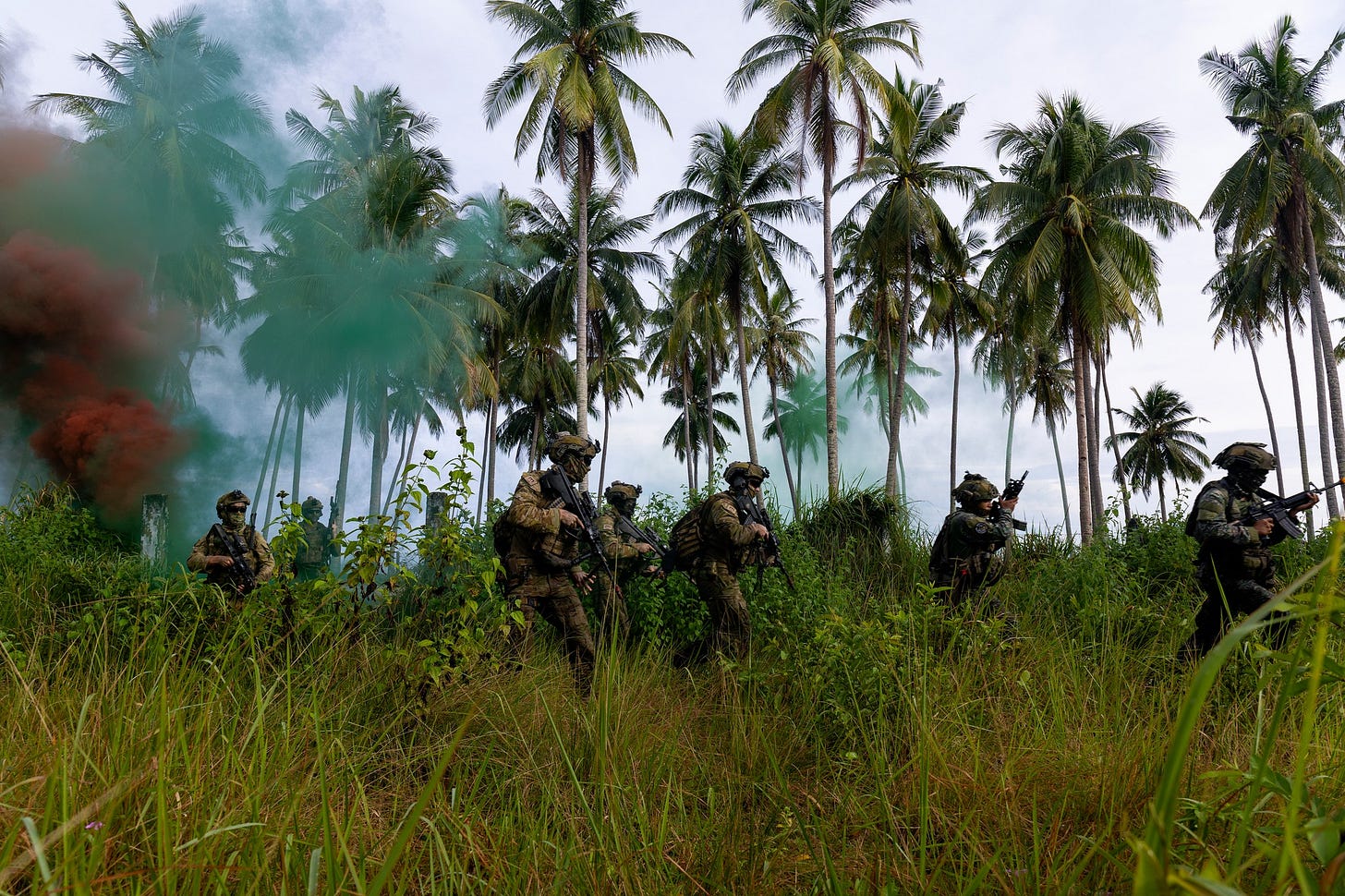Some sectors were panicking when China sent a tug boat to Ayungin Shoal, a low-tide elevation in the West Philippine Sea, where a rusting Philippine Navy transport vessel ran aground more than a quarter of a century ago.
They feared China might tow away the BRP Sierra Madre, an active naval vessel, a lonely outpost that guards the Philippines’ national interests in the West Philippine Sea.
Senior military officials assured the public that there is no real danger that China may remove BRP Sierra Madre from Ayungin Shoal. Rear Admiral Roy Vincent Trinidad, a Navy spokesman for the West Philippine Sea issues, said it will take more than a tugboat to remove BRP Sierra Madre, which is strongly anchored on the shoal’s corals.
Truth matters. Quality journalism costs.
Your subscription to Mencari (Australia) directly funds the investigative reporting our democracy needs. For less than a coffee per week, you enable our journalists to uncover stories that powerful interests would rather keep hidden. There is no corporate influence involved. No compromises. Just honest journalism when we need it most.
“We assess that this is more for their own use if they would need a tugboat to pull out any of their ships that would run aground in the shallow portion of Ayungin Shoal,” he said. Defense Secretary Gilberto Teodoro, for his part, called out some social media users for spreading disinformation that claimed China had towed away BRP Sierra Madre.
“We should be cautious of fake news, just like weeks ago, when it was claimed that the BRP Sierra Madre had been towed,” he said, adding that the information could be deliberate to confuse the people. China has long protested the presence of the BRP Sierra Madre on the uninhabited shoal, part of the strategic waterway, which it claims it has sovereignty based on historical maps.
An estimated $3 trillion worth of seaborne trade passes through the South China Sea every year. Brunei, Malaysia, the Philippines, Taiwan, and Vietnam also have conflicting claims in the South China Sea, believed to have rich deposits of energy and fisheries resources. China’s claims in the South China Sea stand on shifting sands.
No other state has recognized and supported China’s illegal and excessive claims. In contrast, the international community supported the Philippines’ position anchored firmly on the 1982 United Nations Convention on the Law of the Sea (UNCLOS). It was reinforced by a ruling made in 2016 by the international arbitration ruling in The Hague.
The Philippines had deliberately grounded an old, World War II vintage, naval transport in Ayungin Shoal in 1999, after China occupied Mischief Reef four years earlier. Since then, BRP Sierra Madre guarded the Philippines’ interests and halted China’s plan to occupy more unmanned shoals and reefs in the South China Sea.
The Philippines has added Ayungin Shoal among features it occupied in the West Philippine Sea. It also held eight features, including Pagasa Island, one of the largest inhabited territories in the South China Sea. China could not touch the rusting vessel without the Philippines invoking its 1951 Mutual Defense Treaty with the United States. That’s why BRP Sierra Madre remained an active naval vessel, the oldest in its fleet.
As an active Navy vessel, the United States is obliged to come to the defense of the vessel if it is under attack. The reason why the Philippines continued to sustain BRP Sierra Madre, repairing and reinforcing the transport vessel to keep it from falling apart. As far back in the Duterte administration, the BRP Sierra Madre is already a red line.
China has tacitly recognized the Philippines has control over Ayungin Shoal, as it asserted control over Baja de Masinloc, which it seized in June 2012. The Philippines also prohibited China from reclaiming Bajo de Masinloc and converting it into an artificial island similar to seven features it had earlier occupied. It could not also build structures.
These were the two red lines - Ayungin Shoal and Bajo de Masinloc. The Philippines would not allow China to remove BRP Sierra Madre from Ayungin Shoal and would not allow China to build structures and reclaim Bajo de Masinloc. However, tensions have been escalating in these two areas because both China and the Philippines refused to give up their claims.
China would assert its claims but the Philippines would protect its interests in areas within its maritime zones. These are the red lines, not only for the Philippines, but also for the United States, which insisted on freedom of navigation. The US and its allies have been pushing for a free and open Indo-Pacific region, which is an open support to the Philippines’ red lines.
The opinions expressed are those of the author and do not necessarily represent the views of this publication.
Got a News Tip?
Contact our editor via Proton Mail encrypted, X Direct Message, LinkedIn, or email. You can securely message him on Signal by using his username, Miko Santos.
Sustaining Mencari Requires Your Support
Independent journalism costs money. Help us continue delivering in-depth investigations and unfiltered commentary on the world's real stories. Your financial contribution enables thorough investigative work and thoughtful analysis, all supported by a dedicated community committed to accuracy and transparency.
Subscribe today to unlock our full archive of investigative reporting and fearless analysis. Subscribing to independent media outlets represents more than just information consumption—it embodies a commitment to factual reporting.
Not ready to be paid subscribe, but appreciate the newsletter ? Grab us a beer or snag the exclusive ad spot at the top of next week's newsletter.







